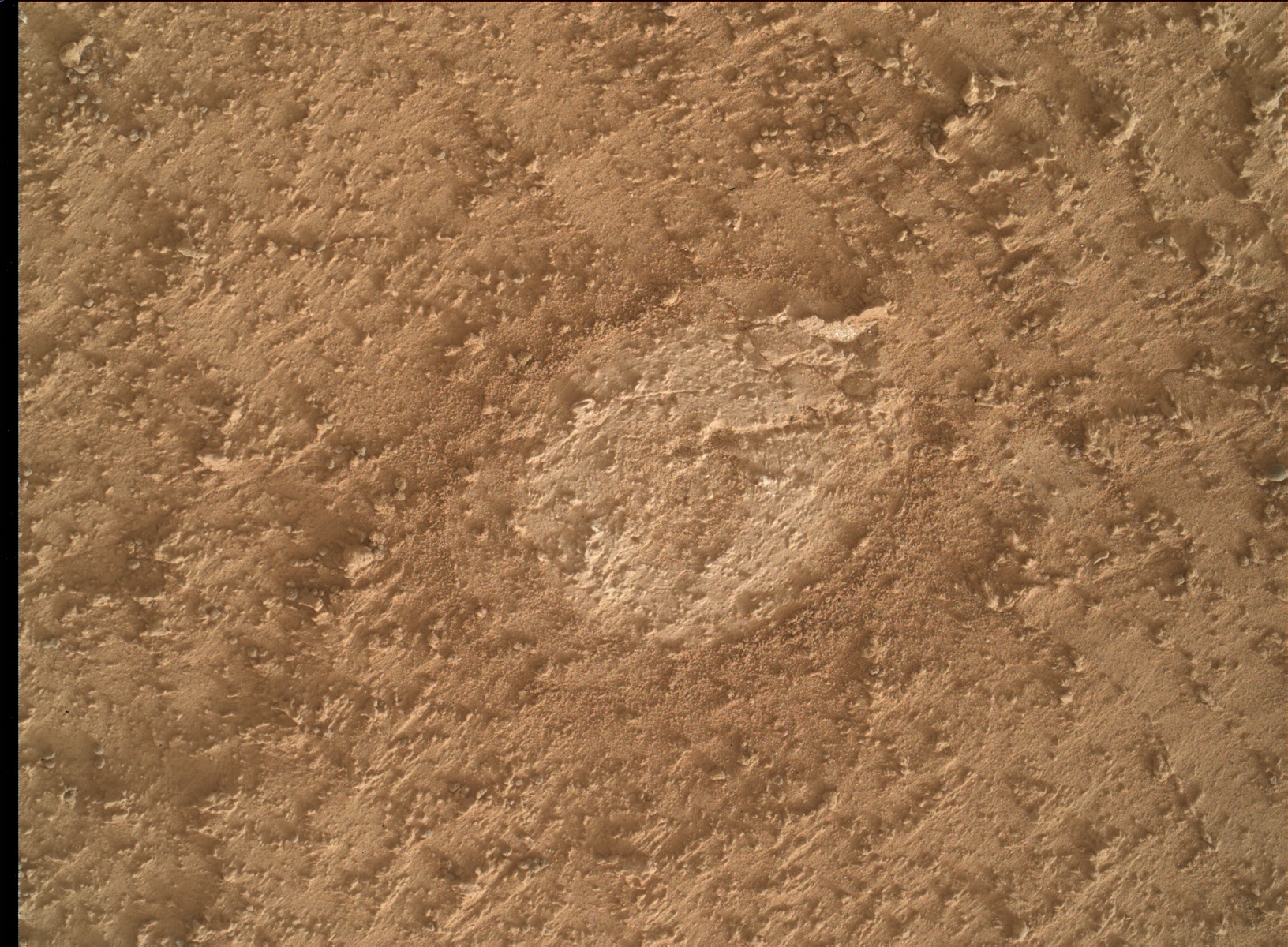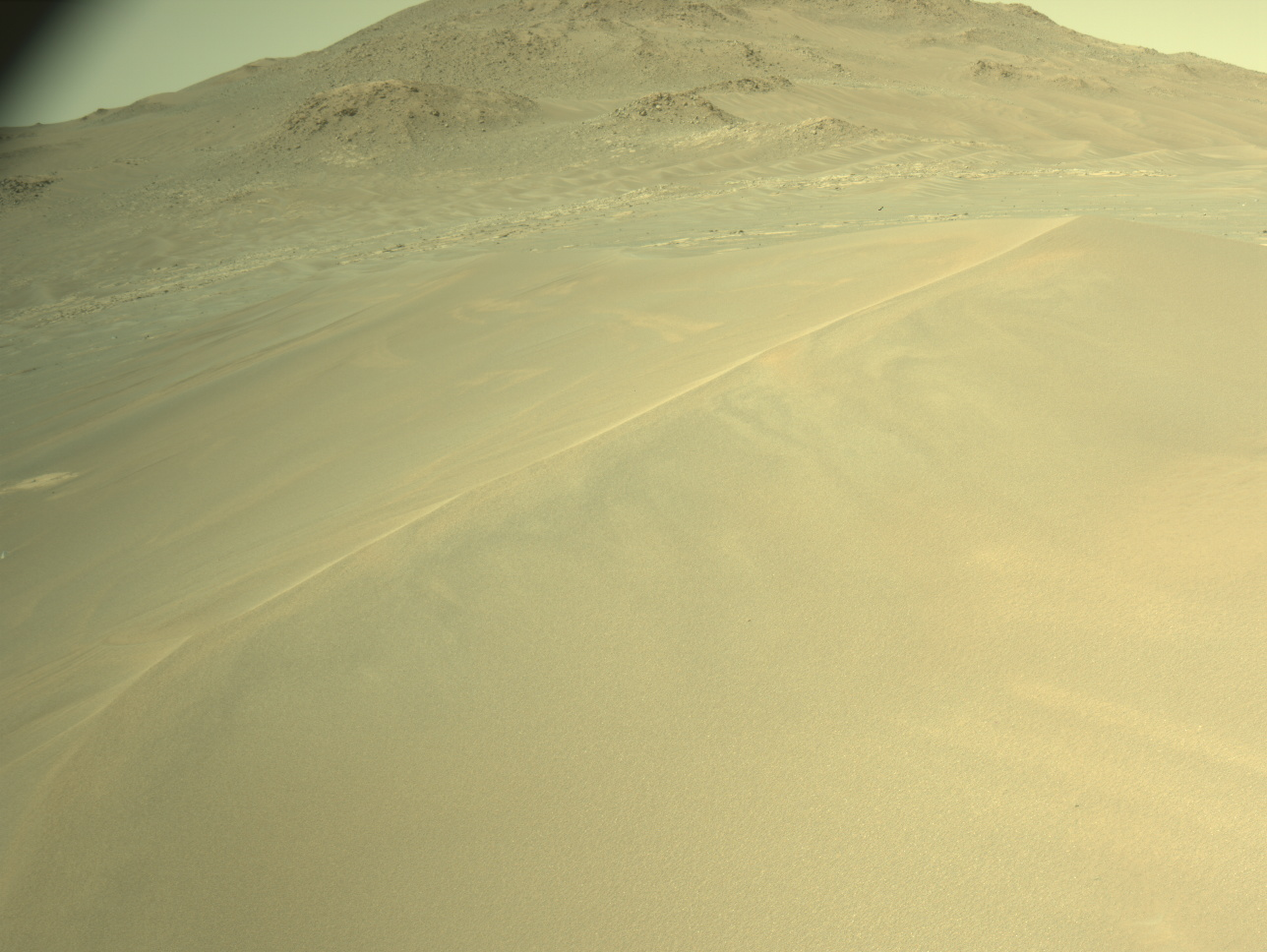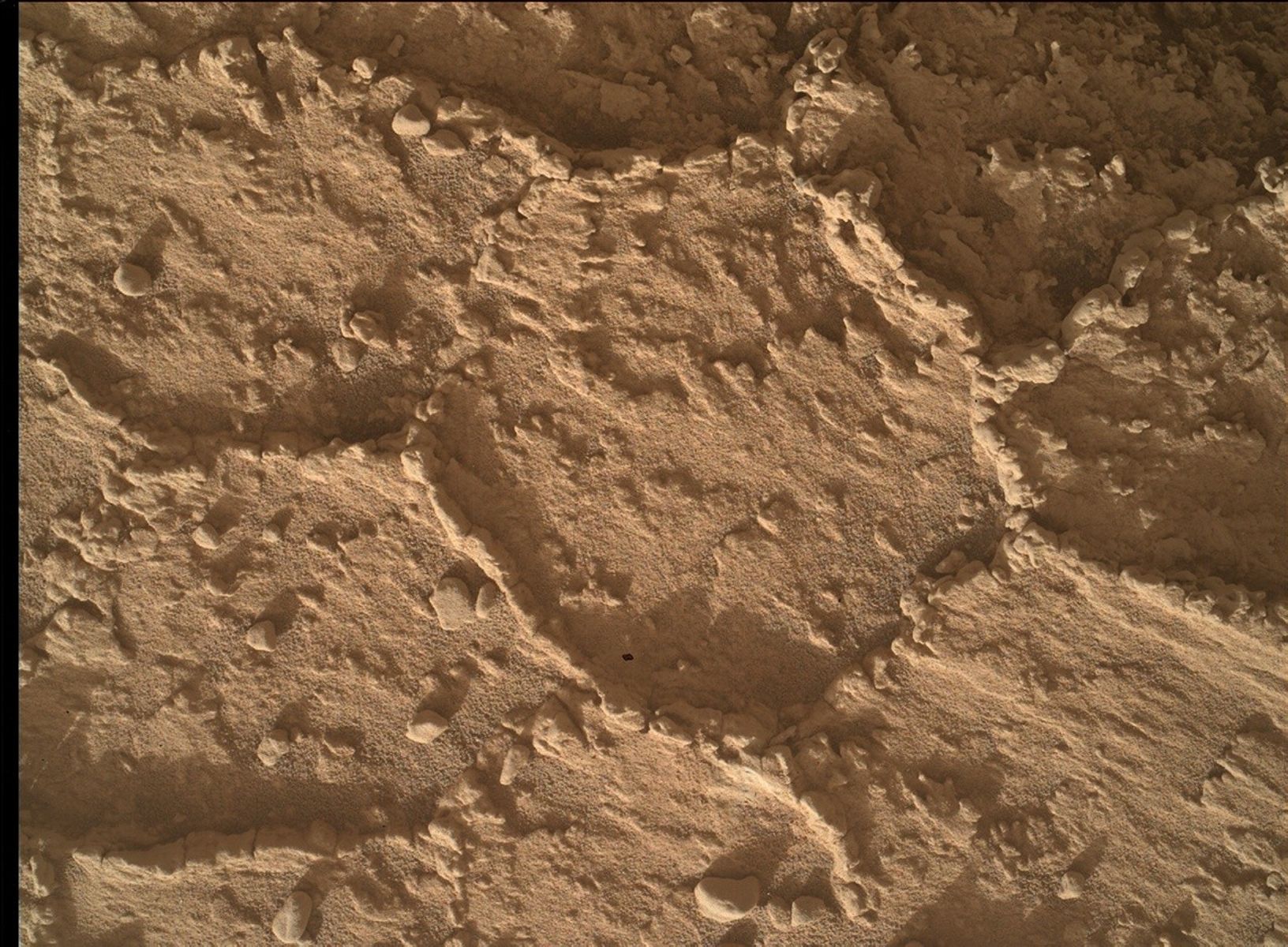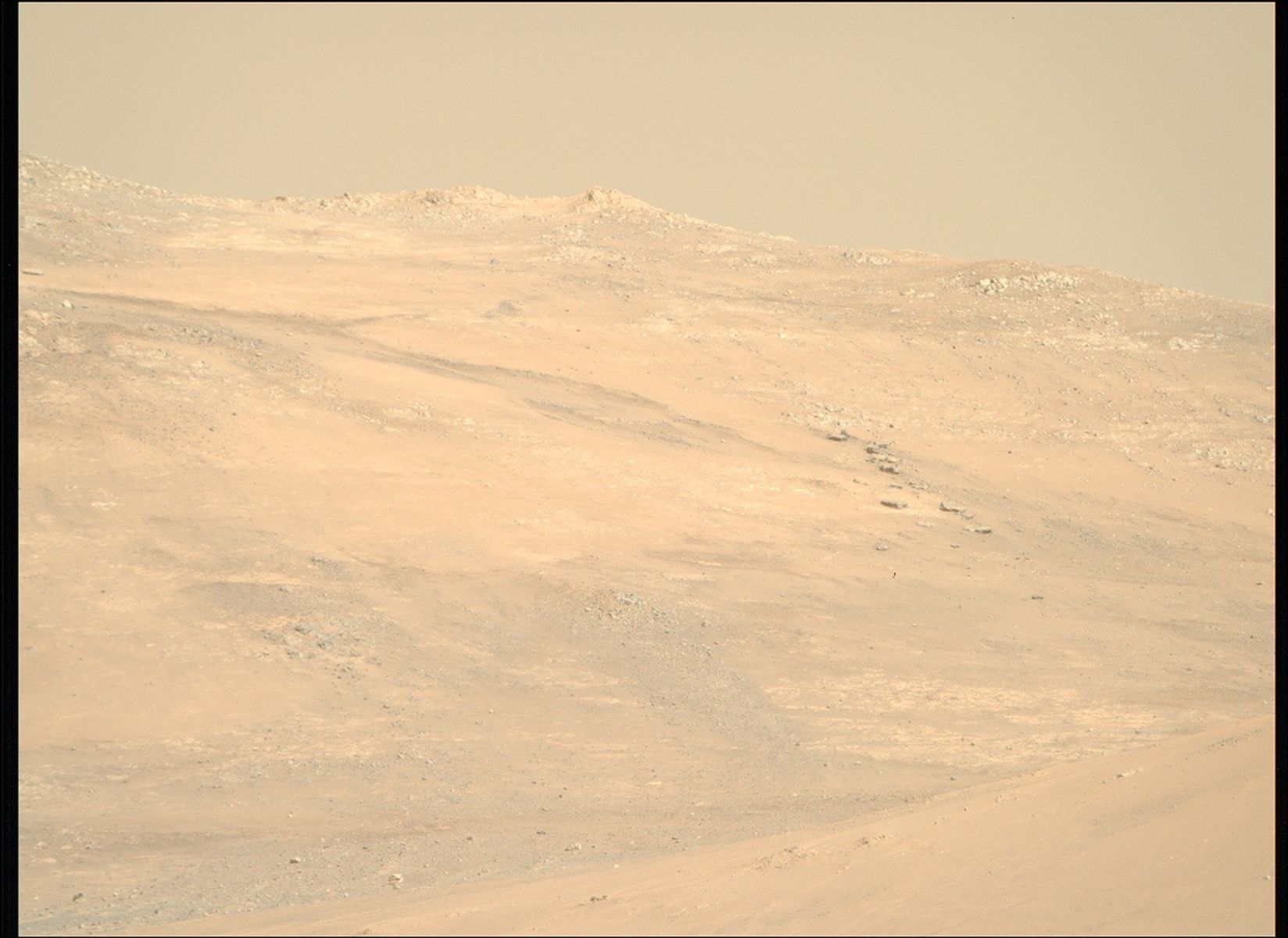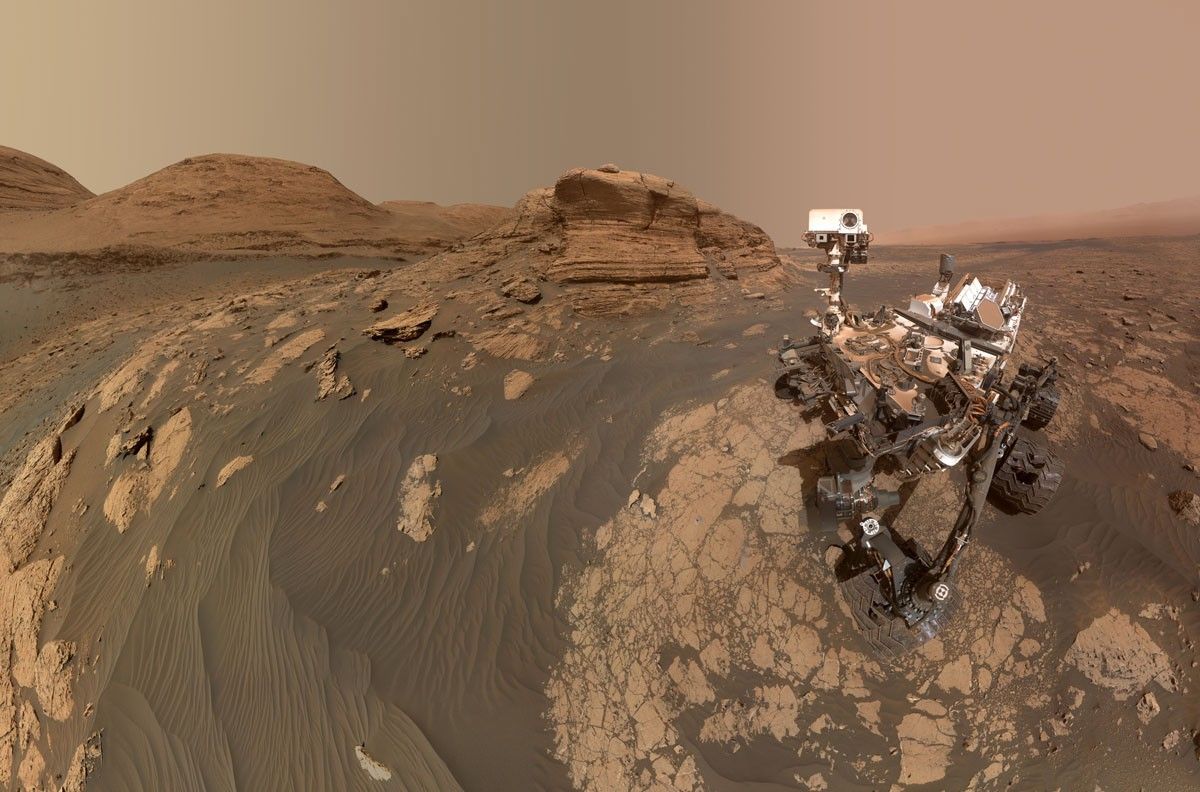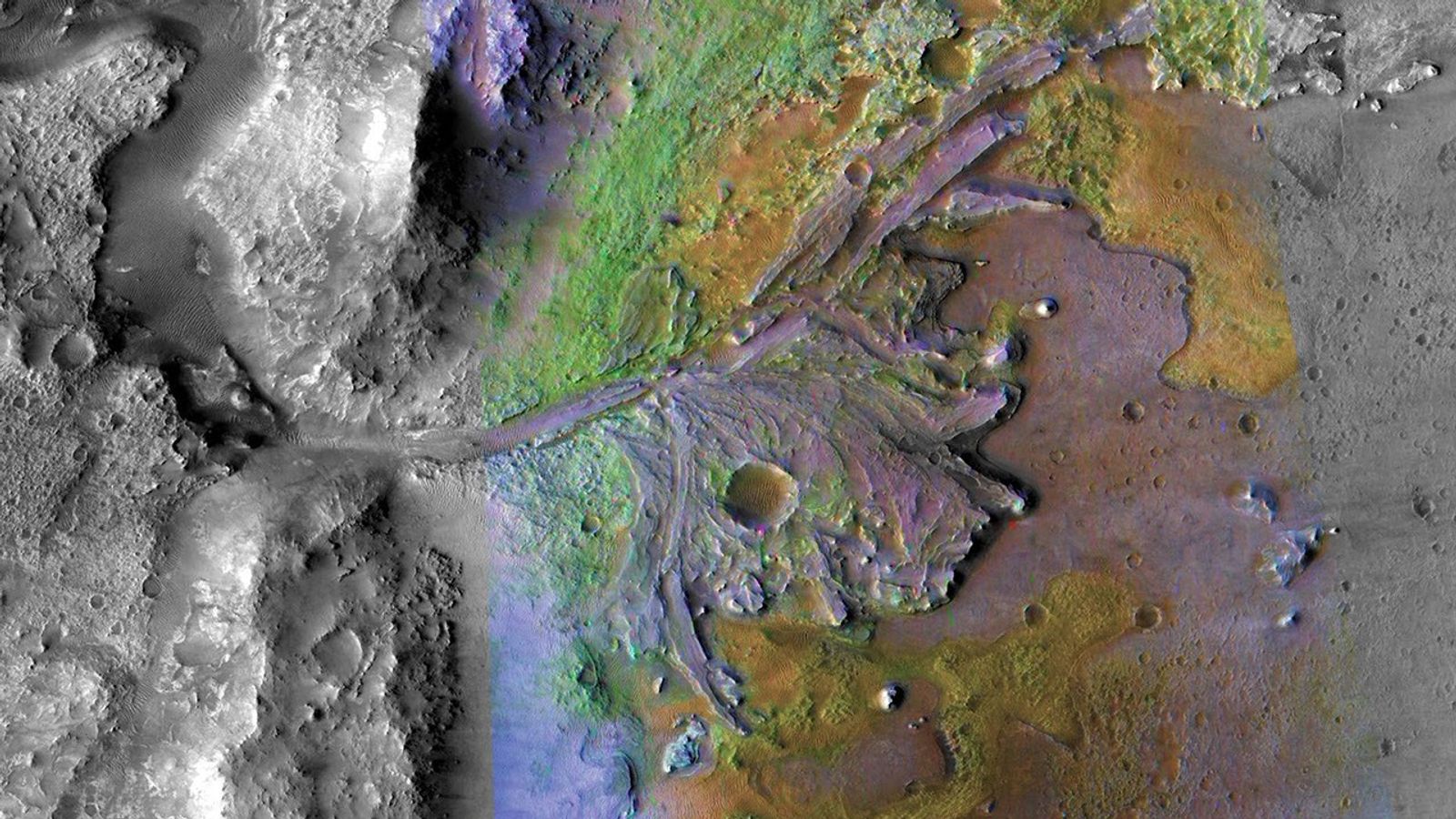Earth planning date: Wednesday, Aug. 21, 2024
Having stayed in place for quite a few sols during our Kings Canyon drill campaign, we’re looking forward to doing a bump (ie: a short drive) and accomplishing some science in a new region. I’m on the SA-SPaH (ie: robotic arm) downlink team, which assess and reports on the success of robotic arm and drilling activities, including being closely involved in drilling campaigns. For awhile there was talk of doing a second Kings Canyon drill, but ultimately our planners decided against it. Though I always love getting involved with drill campaigns, we’re excited about our bump, which will take us near the “Fourth Recess Lake” area.
On sol 4282, we have some arm activities scheduled before a ~10 meter drive. During our first arm backbone, the rover will perform contact science on our “Marck Lake” target, including a DRT brushing and APXS integration. “Marck Lake” is a target just to the left of our existing Kings Canyon drill hole and supports our science studies for continuing to investigate this area’s lithology. We’ll also be doing some LIBS measurements on our drill tailings. This is to get extra data for supporting CheMin and SAM measurements.
After our arm activities, we’re taking advantage of a dust storm watch to do some extra environmental science. This watch comes because of a regional dust storm – visible even from the Earth – that has potential to evolve into a global dust storm. While it’s unusual to see global storms at this time of years, large planet encircling dust storms occur on Mars every three Mars years (about five and a half Earth years) on average. Even if they don’t turn into planet encircling events, regional dust storms on Mars can still grow quite large. The last regional dust storm on Mars occurred in early January of 2022 and had a surface area nearly twice the size of the United States. See this report from NASA for more information.
Towards the end of 4282, we will execute a ~10 meter drive towards the “Fourth Recess Lake” region. This area has numerous bright-toned clasts we’re excited to investigate for evidence of excess sulfur. For sol 4283, we have planned a ChemCam AEGIS activity, allowing autonomous target selection for upcoming geochemical spectrometry. If you’re interested in learning more about ChemCam AEGIS, check out this article.
Written by Remington Free, Operations Systems Engineer at NASA Jet Propulsion Laboratory



























